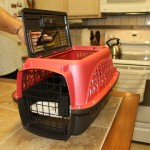Every pet owner knows the struggle of keeping their home free of fur. Despite our best efforts, clumps of pet hair can be found on furniture, floors, and even in the air. That’s why understanding the science behind effective suction is essential for having a truly clean space. In this article, we'll delve deeper into how to successfully remove pet hair from your home by exploring suction technology. Understanding Vacuum Suction Principles Vacuum cleaners work by creating a difference in air … [Read more...]
How to Bathe a Dog: A Step-by-Step Guide
Introduction Bathing your dog is an essential part of keeping them healthy and happy. Not only does it help maintain their skin and coat, but it also gives you a chance to check for any signs of health issues. Whether you have a playful pup, who loves rolling in the mud or a delicate senior dog, knowing how to bathe a dog properly can make the experience enjoyable and stress-free for both of you. This guide will walk you through everything you need to know about bathing your dog at home. Why … [Read more...]
How Water Fountains Affect the Hydration of Cats
Water is crucial for cat health, just as it is for humans, so make sure they get plenty of it. Cats don't drink a lot, so it's easy for them to get dehydrated—that is, to have too little water in their bodies. This may result in serious complications, such as renal or urine difficulties. Since meat doesn't contain much water, cats need to drink significantly more water. Cat water fountains may be useful in this situation! These are akin to specialty bowls that circulate the water, giving cats … [Read more...]
The Importance of Animal Shelters
Animal shelters provide a safe place for people to bring lost pets, find adoptable animals, and provide low-cost spay/neuter services. They educate residents on responsible pet ownership and disease control, serving as a valuable community resource. Shelters should be allowed to reduce or waive fees associated with adoptions and transfers. Environmental enrichment in shelters has strategic benefits beyond increasing psychological well-being, including improved behavioral and health … [Read more...]
Who Gets the Pets in a Divorce?
Deciding on a kids’ care, visitation, and support is the most popular issue that couples argue about during a divorce. Yet there is one more problem that many more couples don’t know how to resolve: who gets the dog in a divorce? How to care about your pet and those you got in marriage? Is court litigation the only way to decide on the custody of dogs in divorce? In this post, we’ll try to shed light on these questions. How Does it Usually Go? First of all, let’s see what judges do most of the … [Read more...]
What is the tallest pet gate? |
One of the most common questions asked by pet owners is “What’s the tallest gate I can get for my pet?” This question typically arises when an owner wants to close off a room or hallway in their home so that they and their family members are safe from potential accidents. This guide will introduce you to some of the best-selling gates on Amazon, as well as features, dimensions and other information about each one. The “72” tall pet gate” is the tallest pet … [Read more...]
Kenneling pets in style and comfort
As you know we recently brought in 2 new members of our family, Coco and Rocky. Having new dogs in the family means training and getting the dogs adjusted to different circumstances. Our dogs are crated when we leave the house and during the night. Petmate has recently expanded its reputable line of plastic pet carriers to include a modern and versatile top-loading model. The 2-Door Kennel presents pet owners, particularly cat owners, with a very helpful solution for more easily inserting … [Read more...]
























